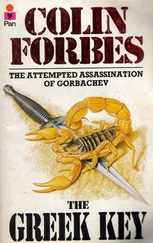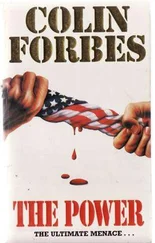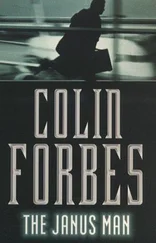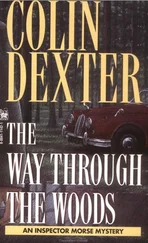“Normally no, of course, but Nevill theorizes that to develop a high-level functional civilization under these climatic conditions the Tazoons must have had some pretty sophisticated technology. Certainly, they knew well enough what they were up against.”
Van Noon nodded. The trouble was that what was sophisticated technology to one culture, could be impenetrably obscure black magic to another. U.E. had come across one or two of those already…
“Furthermore,” Nash continued, “ the moist conditions don’t penetrate very far down into the sand, so that the deeper an artifact is buried the greater are its chances of long-term survival. Deep exploration at a really promising site should give us a slice of Tazoon civilization in a very reasonable state of preservation. The bottom line is that we need only one good site to justify the whole Tazoon expedition.” He glanced up at Fritz. “And that’s precisely what I want you to help us achieve.”
The next day Fritz found Philip Nevill in the Archaeological HQ, apparently none the worse for his previous day’s exposure.
“Hullo, Lieutenant van Noon. What can we do for you?”
“Fritz. I hope you can answer a question. Do you know what happened to the Tazoons themselves—I mean, why did they become extinct so swiftly when they had achieved such an apparently high technological level?”
Nevill scowled. “You’re equating technology with the ability to manipulate environment and thus ensure a higher survival potential.” He shrugged. “I’m afraid I can’t answer that. Indications are that they abandoned the populated areas en-masse and migrated towards the equatorial regions. From distribution figures it looks as though the entire population set out for the tropics and were decimated on the way.”
He rubbed his hands over his eyes. “Fritz, this suggests they were fleeing from something biologically intolerable which claimed a great number in flight. That’s our best guess”
“Drastic climatic change?” asked Fritz.
“Climatic, no— environmental, possibly. We looked for evidence of major climate changes, but there’s nothing significant that we can trace. The only thing that is recent, geologically speaking anyway, is the sand.”
“The sand?”
“Mmm. Probably the result of some ecological imbalance. The major plains appear to have once included prolific forests, such as are still to be found in places around the temperate belts. For some reason, drought or fire or blight perhaps, these forests died. The results were typically Terran in their inevitability.”
“Soil erosion.”
“Yes, exactly, and on a catastrophic scale. Once the sand got to work on the unprotected soil nothing thereafter got the chance to germinate. More soil dried up and blew away, hence more sand. We’re still picking up viable seeds from the deep diggings, but all the shallow seeds are either dead or had started growth only to be uprooted.”
“When did this happen—the erosion?”
“Can’t tell with certainty, but it appears to slightly pre-date the extinction of the Tazoons themselves. Whether these two factors are related is something only further research can prove. But it seems likely. Does that answer your question?”
“Yes, but only to pose another,” said Fritz. “I don’t understand how any culture technically able to explore the neighbouring satellites could have been wiped out by anything as foreseeable and reversible as soil erosion. And why migrate to the tropics when the soil fertility remained in the temperate belts?”
“I don’t know,” said Nevill honestly. “It’s a difficult problem. The Tazoons were not even humanoid, and the probability is that neither their physiology nor their culture had anything in common with our own. It could be very misleading if we attempted to interpret their actions by simple extrapolation of what we might have done in similar circumstances.”
“A good point,” agreed Fritz. “I don’t necessarily agree with it, but I’ll bear it in mind. Thanks, Philip, you’ve given me something to think about.”
Having established that the U.E. squad was reasonably well quartered, Fritz turned his attention to the transport problem. This brought him back to Jacko who had compiled a transport survey which he presented with as much enthusiasm as if it had been his own death warrant.
“We’re in trouble, Fritz. Of the thirty ground-cats originally provided for the enterprise only ten are still functioning. Two hundred hours operating life on Tazoo reduces a cat to a condition where you couldn’t sell it for scrap. By sorting bits and pieces we could probably reconstruct another couple of cats, but no matter how you cut it, it’s not going to be very long before we start walking.”
Fritz stared disconsolately at a virgin notebook. “What about tractors and heavy equipment?”
“They’re not too bad—but only by virtue of the fact that most of them are still in sealed crates. Once they’re broken-out there’s no reason to suppose they’ll last any longer than the cats do. This combination of corrosion and abrasion is something to which I’d not cheerfully expose a clockwork mouse.”
“All right,” Fritz sighed. “What protection can we give to the cats to extend their working life?”
“A lot of the vehicle we can plastic coat, as they do with the Knudsens. The engines are a more difficult problem. Some genius thought of providing them with standard aluminium-alloy turbine housings, and what the Tazoon atmosphere does to the alloy makes my flesh creep. Even the vitreous liners devitrify and release particles of silica into the bearings.”
“Don’t bother to describe,” said Fritz, “what that does to the bearings. I think we have to face the fact that while we might save most of the cats themselves we aren’t going to be able to save many of the engines. We could devise a system of enclosing the engines in an inert atmosphere— but I doubt if we have the facilities here to do a permanent job. We then also need a supply of controlled pH, moisture-free oxygen for the air intake. I think we could produce that by electrolysis, but I doubt if we can handle it in sufficient quantities to be of much value.”
“And so on ad-infinitum,” said Jacko ruefully.
Fritz nodded. “Well, let’s try it anyway. I want two cats modified. Plastic-coat them everywhere possible, seal the engine compartment and fill it with a nitrogen and hydrogen mixture of non-ignitable composition. Get our micro-Linde column working for the nitrogen and make an electrolysis plant for the hydrogen. You’ll need both the Linde and the electrolytic plant to get enough oxygen for the air-supply for the engine intakes, and you’d better dilute the oxygen with any nitrogen you can spare, then adjust the turbines to run on that.”
“And what do I keep the oxygen in?” asked Jacko.
“They’ve a fair supply of the plastic poly-polymer they use for spraying the huts. It shouldn’t be beyond our capacity to blow a gasbag from that.”
“It all sounds feasible,” said Jacko after some thought, “but I doubt the capacity of the micro-Linde to give us all the nitrogen we need.”
“So do I,” nodded Fritz, “that’s why I said to modify two cats only. There’s plenty of other things to try, but this is the most obvious, and we’ve neither time nor the resources to start nitrogen fixation in a big way.” He went to the window, opened the shutter and stared moodily out at the red and featureless wasteland.
“Sand,” he said. “Nothing but bloody sand, fine-grained, abrasive and all-pervading. What we need, Jacko, is something completely new in the way of transport on Tazoo. I wonder what the Tazoons themselves employed.”
Читать дальше












